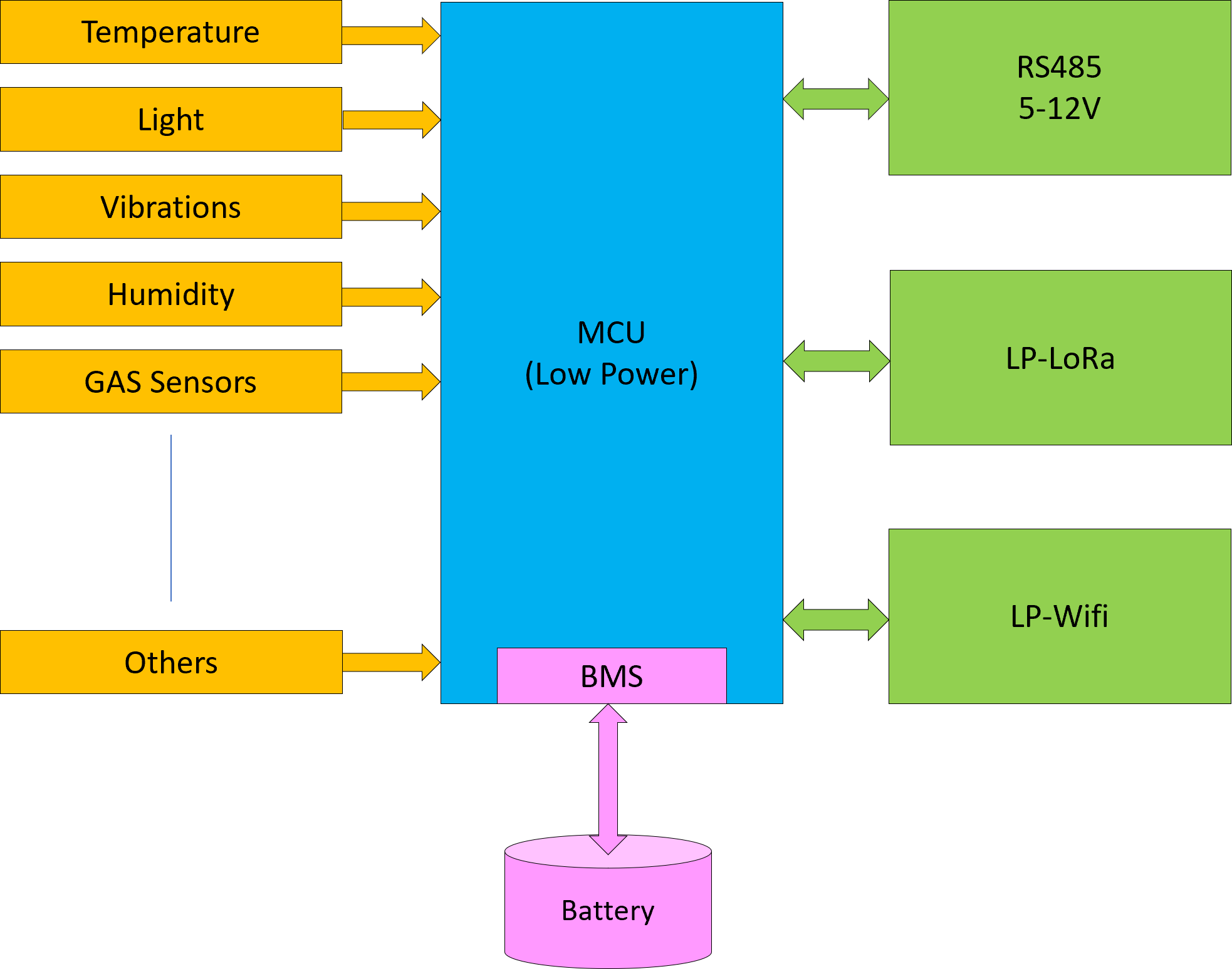I have always dreamed about automating my own home and one of the key starting components are low cost sensors. This technology is available today, so it is not rocket science, but I want to create a low cost practical system. Starting with sensors only I would like to monitor temperature in every room in the house as a start. If I can monitor temeperatures I can control heating – it is a simple application that any modern electric owen can do, but I fancy doing it through a centralized system and to deal with some of the challenges I face getting there.
The concept drawing abobe illustrate 3 different communication options as well as some sensors and a battery solution.
Battery is a challenge because you will either need to recharge batteries or swap batteries on regular intervals. But, battery combined with Low Power Wifi/Lora is the most elegant solution. The option to use a cheap network like RS485 (or similar) and power cables. You then get 4 cables to each sensor. The drawback with the RS485 solution is that you need to drag cables around the house. I think it’s ok to have a system that can do both specially since the RS485 option hardly require PCB footprint at all.
The pink part – BMS and batery is quite simply a voltage sensor on a 3,7V LiPo or similar. We don’t charge, but we can monitor battery state and give a low power alarm.
This block diagram is rather generic, but I think I can manage it all in one circuit which will be better for higher volumes. I have a L4 Nucleo board I can use as a start. Standard for all the sensors are that it is of little extra usage to monitor them constantly, so we need to work out a time scheme. Starting with temperature I would say that measuring the temperature every 10th second is more than sufficient. That means we can sleep in 9.9 seconds and just switch on a minimum of power for a little while. Being intelligent we can also decide if temperature have changes sufficiently for use to switch on the radio and report anything. If we do this with every sensor we should end up with a pretty good low power scheme where a seleceted battery cam last a predictable period.
As for form factor I am thinking a bigger board this time. Most of the cost here can be lowered more with volum than with size, so having a larger PCB that can do more makes sence. I can then configure that as I please for each room. Lets at least start with this.
